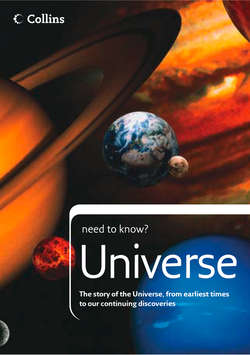Читать книгу Universe: The story of the Universe, from earliest times to our continuing discoveries - Peter Grego - Страница 11
Stellar energy, cosmic distances
ОглавлениеThat blindingly brilliant object that illuminates the daytime sky – our nearest star, the Sun – appears to be the single most important object in the heavens. If it emitted less heat and light than it currently does, humans would struggle to survive; our species would face the bleakest of prospects as the Earth’s oceans froze and most plant and animal life on our planet became extinct. If its heat and light were switched off, human life could not survive at all. If the Sun were a solid lump of coal, it would burn itself to a cinder within a few thousand years. After millennia of speculation, the source of the Sun’s prodigious output of energy (and that of all the stars visible in the sky) was finally explained in 1926 by the British scientist Arthur Eddington. Something far more powerful than simple chemical combustion powers the Sun. We rely on the thermonuclear processes elegantly encapsulated within Einstein’s formula E=mc2 for our continued existence.
As the skies gradually darken after sunset, stars begin to appear. It may seem ironic that the starlight upon which such hopes and dreams for the future are made actually set out on its journey across the galaxy in the remote past – its light may be just over four years old or more than 3,000 years old. Rigil Kent, a star in the constellation of Centaurus, is 4.4 light years away, and the bright star Deneb in Cygnus is 3,200 light years distant. Starlight takes 2.9 million light years to reach us from the nearest big galaxy to our own, the great spiral in Andromeda.
With the exception of the Sun, the stars are too far away to perceive as globes of glowing gas; even when viewed through a powerful telescope, they appear as mere pinpoints of light. Slight variation in colour can be noticed between the stars – some appear white, others bluish, some slightly red. A star’s colour tells us a lot about its physical status – blue stars have intensely hot surfaces, while red stars have comparatively cool surfaces.
Examples of light travel time to the Earth for various objects visible with the unaided eye.
